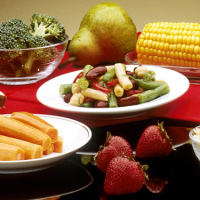Fast Facts On Potatoes and The Health Benefits
Potatoes have long been a staple in diets worldwide, offering both versatility in culinary applications and a rich history. In this article, we delve deep into the origins, nutritional profile, varieties, health benefits, and cultural significance of this remarkable tuber.
Origins and Historical Significance
The potato (Solanum tuberosum) is native to the Peruvian-Bolivian Andes and was first domesticated by pre-Columbian farmers around 7,000–10,000 years ago. The Inca Indians in Peru were among the first to cultivate potatoes, recognizing their value as a reliable food source. Following the Spanish conquest of the Inca Empire, potatoes were introduced to Europe in the second half of the 16th century, eventually becoming a staple food in many parts of the world.
Nutritional Profile
An average 5.3-ounce (150-gram) potato contains approximately 110 calories and is a rich source of essential nutrients. Notably, it provides about 30% of the daily recommended intake of vitamin C and 15% of the daily recommended intake of potassium (620 mg), which is more than a medium-sized banana. Additionally, potatoes are free from fat, sodium, and cholesterol, making them a heart-healthy food choice.
Diverse Varieties
There are over 4,000 varieties of potatoes, each with unique characteristics suited to different culinary uses. Some of the most common types include:
- Russet Potatoes: Known for their rough brown skin and fluffy white flesh, russets are ideal for baking, mashing, and frying.
- Yukon Gold Potatoes: These all-purpose potatoes have creamy yellow flesh and thin skin, making them versatile for various cooking methods.
- Red Potatoes: With their thin red skin and firm texture, red potatoes hold their shape well, making them perfect for roasting, soups, and salads.
- Purple Potatoes: Recognized for their vibrant color, purple potatoes are best for baking, roasting, or adding a pop of color to salads.
- Fingerling Potatoes: Small and finger-shaped, these potatoes are excellent for roasting or pan-frying, offering a unique presentation.
Each variety offers distinct flavors and textures, enhancing the culinary experience.
Health Benefits
Incorporating potatoes into your diet can offer several health advantages:
- Bone Health: Potatoes provide essential nutrients like calcium, magnesium, and phosphorus, which are crucial for maintaining strong bones.
- Blood Pressure Regulation: The potassium content in potatoes helps regulate blood pressure by balancing sodium levels in the body.
- Heart Health: Potatoes are free from fat and cholesterol and contain fiber, which can help reduce cholesterol levels, thereby supporting heart health.
- Digestive Health: The dietary fiber in potatoes aids digestion and promotes a healthy gut microbiome.
- Weight Management: Potatoes are low in calories and high in water content, helping you feel full longer and potentially aiding in weight management.
It’s important to note that the method of preparation significantly impacts the health benefits of potatoes. Baking, boiling, steaming, or roasting are recommended to retain maximum nutrients, while frying should be minimized due to added fats and calories.
Potatoes have had a profound impact on cultures and economies worldwide. They are the third most important food crop globally, following rice and wheat, with more than 1 billion people consuming potatoes each year and worldwide production exceeding 300 million metric tons.
Fun Facts
- Space Agriculture: Potatoes were the first food to be grown in space, demonstrating their resilience and importance as a food source.
- Water Content: Potatoes are composed of about 80% water and 20% solids, contributing to their low calorie content.
- Consumption Statistics: The average American consumes approximately 124 pounds of potatoes per year, while Germans consume about twice as much.
Conclusion
The potato is more than just a common food item; it is a nutrient-dense, versatile, and culturally significant crop that has played a vital role in human history. Understanding its origins, nutritional benefits, and diverse varieties can enhance our appreciation and utilization of this remarkable tuber.










